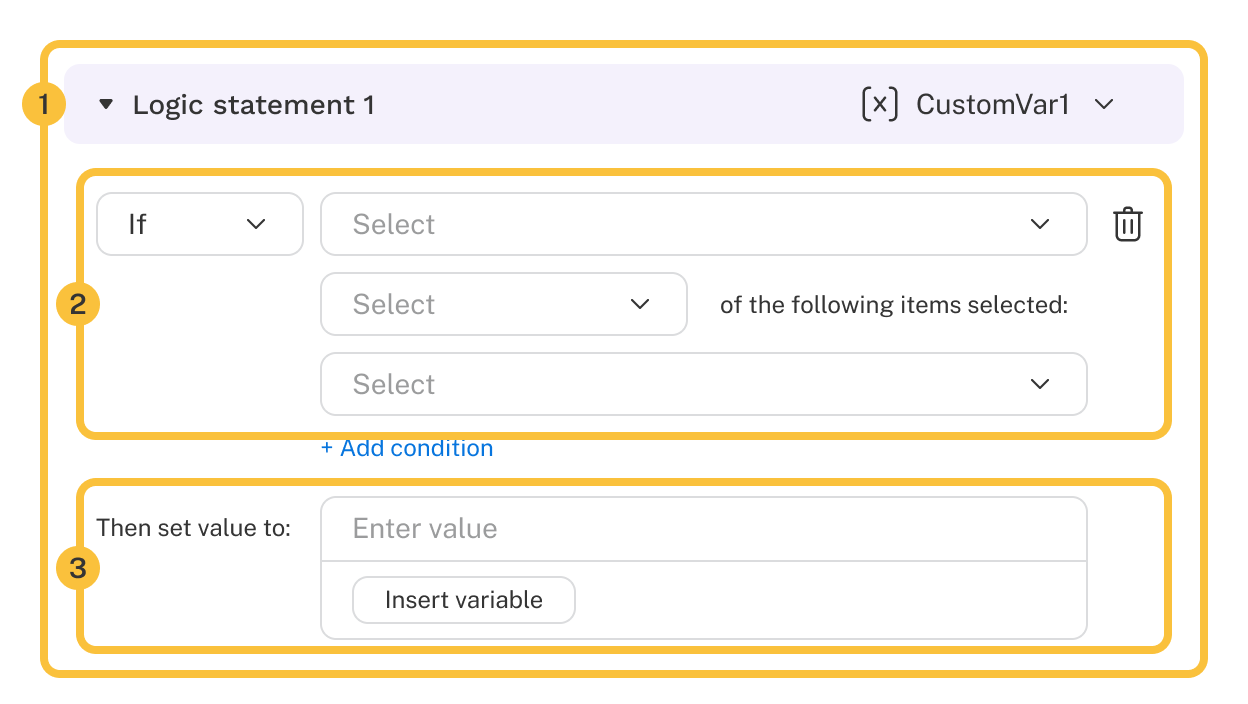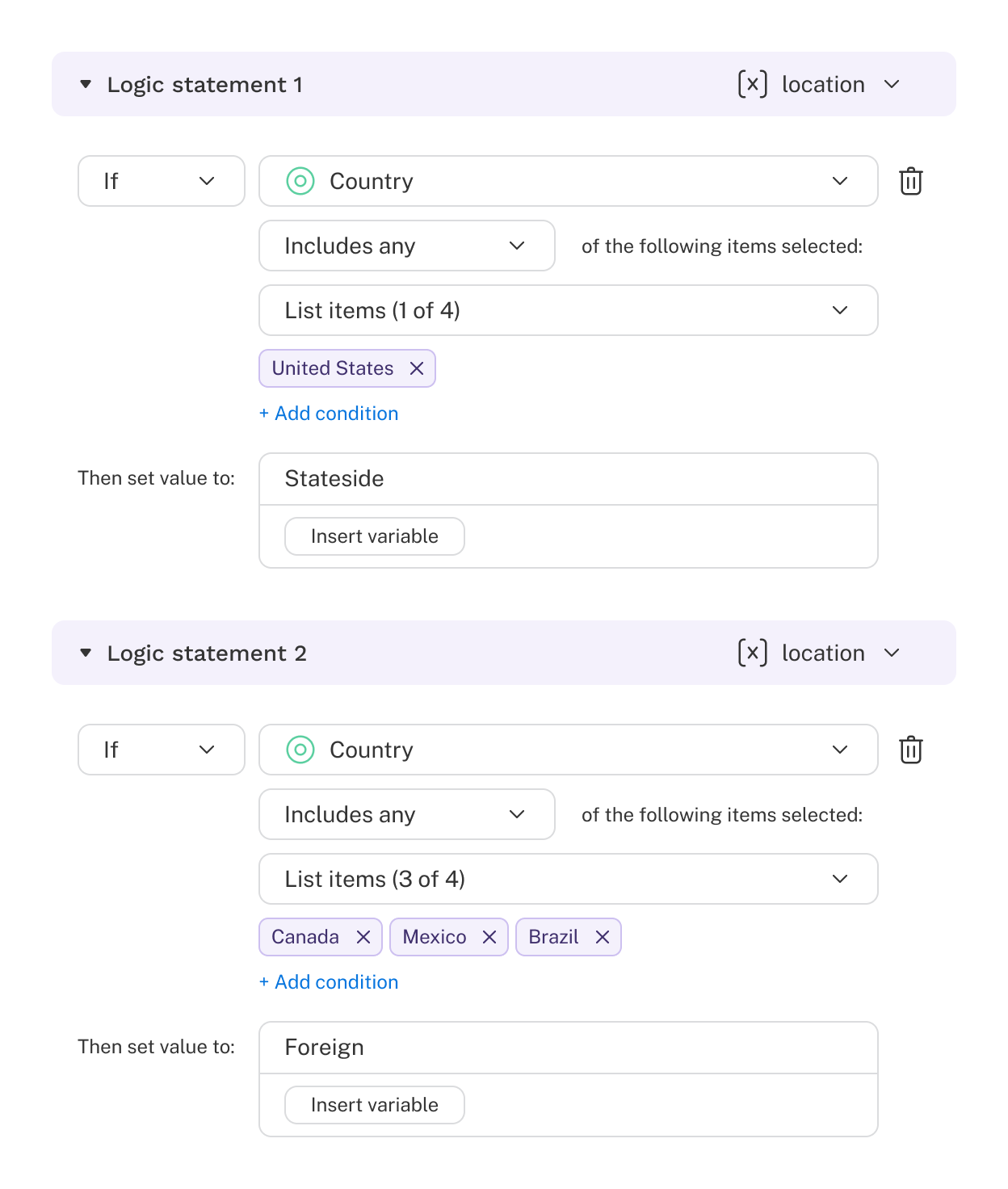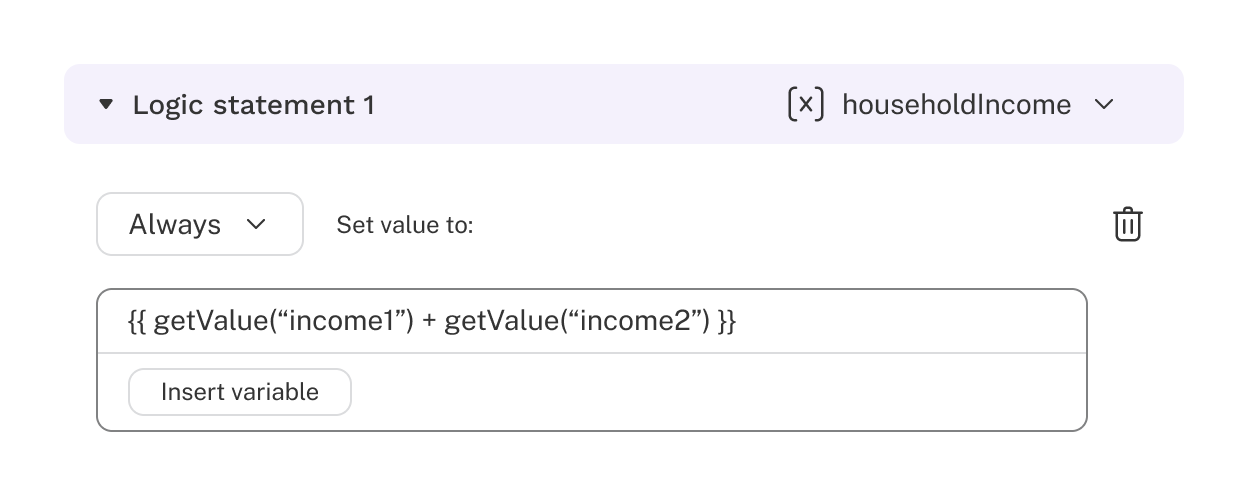Introduction
Variable logic allows you to evaluate conditional logic and save values to predefined variables in your survey.
Adding variable logic is easy, just:
- Click any Add button.
- Select Variable logic from the list to add it into your survey flow.
- Configure settings as needed.
- Click any Add button.
- Select Variable logic from the list to add it into your survey flow.
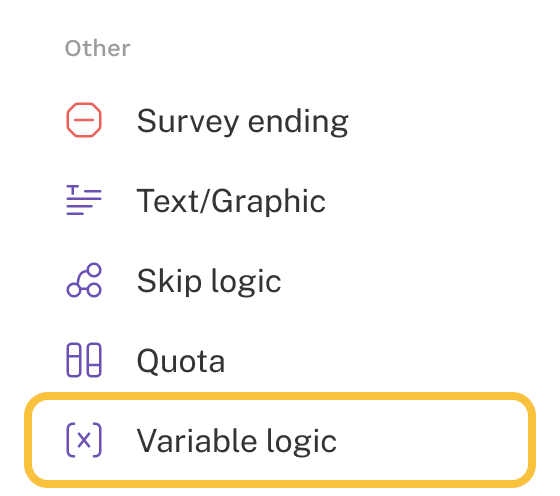
- Select variable or create a new one.
- Configure the Variable logic settings.
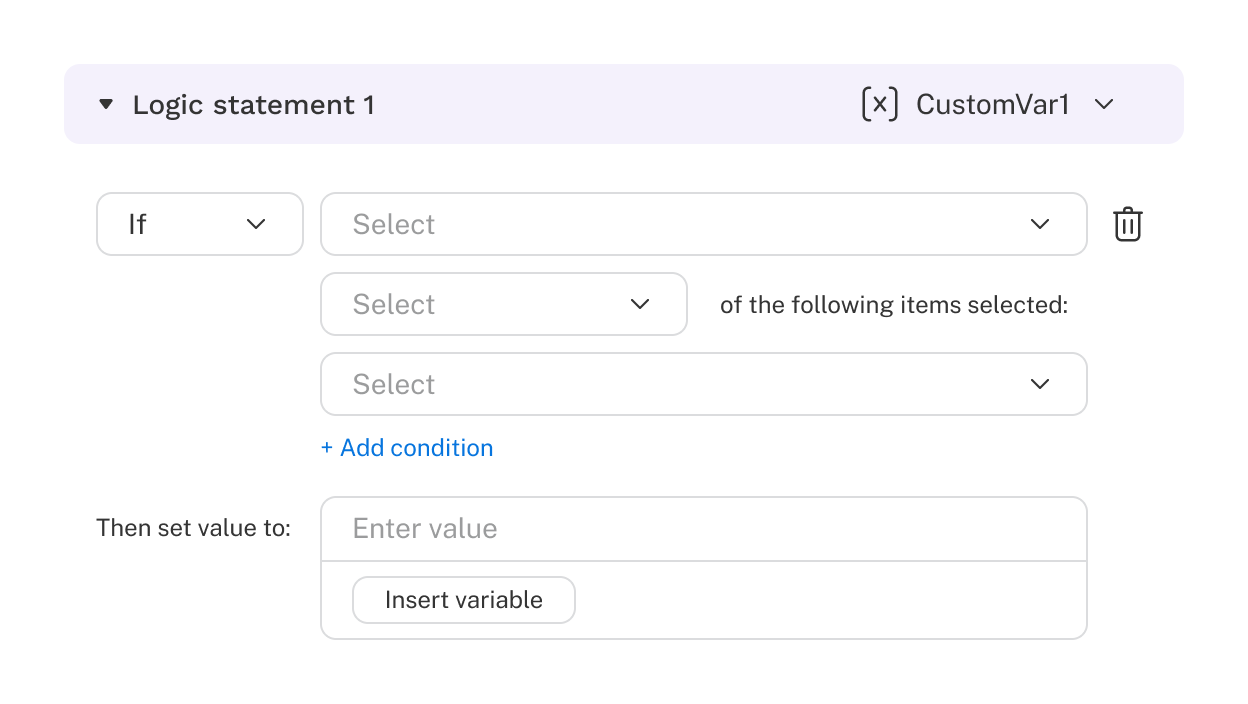
When a respondent arrives at the point in the survey where the variable logic is located, the logic is evaluated and if the condition is true, then the provided value is saved to the database.
Variable logic elements are not seen by respondents. Instead, the operation occurs behind the scenes.


